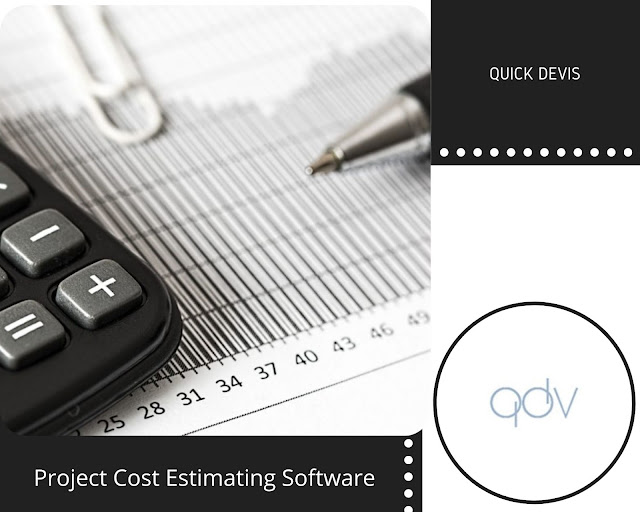How to Choose the Right Project Cost Estimating Tool for Your Business
Why Selecting the Correct Estimating Tool Can Be the Difference Between Making or Breaking Your Project
Come on—no one enjoys surprises with project budgets. You estimate, you quote, you begin work… and the true costs send the initial estimates flying out the window. Ring a bell?
It is not only you. Projects have also been reported to go over-budget in almost one-half of their budget estimates, and estimation errors have been noted as one of the leading causes of such occurrences. Thus comes Project Cost Estimating Tools, which puts your business under control, makes you work smarter, and avoids costly mistakes.
With so many tools available, though, how do you find out which one is best for your business?
That's precisely what we're going to get you to realize today. No matter whether you're working in construction, engineering, IT, or any other project-oriented industry, this guide will take you through what to watch out for, what to steer clear of, and how to select a tool that works for your team—not against it.
Begin with Your Needs: One Size Doesn't Fit All
Before we jump into the extensive list of features various tools provide, step back and ask yourself some fundamental questions:
How large are the projects you work on?
Do your crews work on-site, remotely, or a combination of both?
Are you estimating for time, materials, labor—all three?
Do you already work in other tools such as Excel, ERP, or scheduling software?
You want a tool that accommodates your way of working—not one that makes you adjust your process just to accommodate the software. A good Project Cost Estimating Tool must bend to your business, not the other way around.
Write down a quick list: must-haves, nice-to-haves, and deal-breakers. You'll be glad you did.
Don't Be Blinded by Gimmicks—Identify Actual Real-World Usability
We hear you—some software appears sleek. It has loads of tabs, buttons, and dashboards. But if it makes your work more difficult rather than simpler, why bother?
What truly matters is this:
Ease of use – Your team can step in without requiring a 5-hour guide.
Templates & presets – Recycle standard estimates and save a lot of time.
Exact calculations – Math errors = budgeting errors.
Collaboration – Your estimators, project managers, and finance people need to be aligned.
Historical data – Use history to learn from past projects so your estimates become more intelligent with time.
A great Project Cost Estimating Tool doesn't only provide you with numbers—it provides you with confidence in those numbers.
Think Long-Term: Select a Tool That Evolves with You
Perhaps you're a tiny team today. Perhaps you're just beginning to grow. But next year? The year after next?
Don't short-change yourself by choosing a tool that can only accommodate your size today. Rather, choose something scalable—something that can support larger projects, more users, and additional features as your requirements grow.
The Project Cost Estimating Tool of the future needs to empower your growth, not constrain it.
Support and Training Make a Difference—A Big One
Even the greatest tools require a bit of human support.
Picture this: You're attempting to deliver a final budget to a client, and you run into an issue. Do you need to wait for hours—or days—for assistance? Or would you rather a support crew that's quick, helpful, and knowledgeable?
Seek out tools that provide:
Free training or onboarding
Thorough help articles and video tutorials
Live support (chat, phone, or email)
Regular updates that truly enhance the tool
Software is only as good as the developers. If the support is poor, so will your experience.
Try Before You Buy—Always Ask for a Demo or Free Trial
Here's a golden rule: Never purchase software without first trying it.
If the tool is truly that great, the company wouldn't hesitate to provide a free trial, or even at least a guided demo. Make the free trial available.
While in the trial:
Test how fast you can create a new estimate
Invite colleagues and observe how it works with collaboration
Look at whether it connects with your current systems
Try exporting reports or budgets to be able to send to the client
And most of all—try it out and see how it feels. If it's clunky or annoying now, think about what it'll be like in the midst of a hectic project.
Wrapping It All Up: Pick Smarter, Estimate Better
The Tool You Use Today Will Define Your Projects Tomorrow
Let's be real—Project Cost Estimating Tools aren't a nicety anymore. They're a great investment that saves you time, money, and anxiety. But they're not all created equal.
The right choice is the one that gives you more precise estimates, easier collaboration, and improved results on every project. Don't accept a tool that "kinda" gets the job done. Take the one that enables you to do your job better.
If you’re ready to stop second-guessing your estimates and start managing projects with confidence, Quick Devis offers one of the most intuitive and powerful Project Cost Estimating Tools out there. Give it a try—and see the difference it can make in your workflow. ✅



Comments
Post a Comment